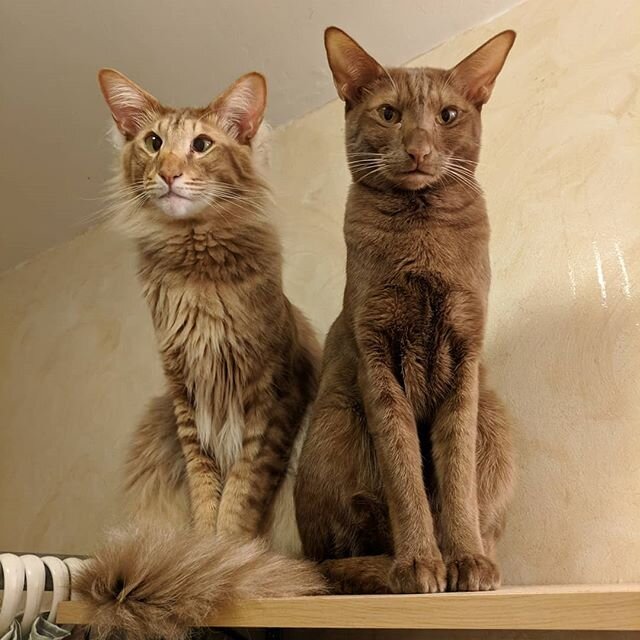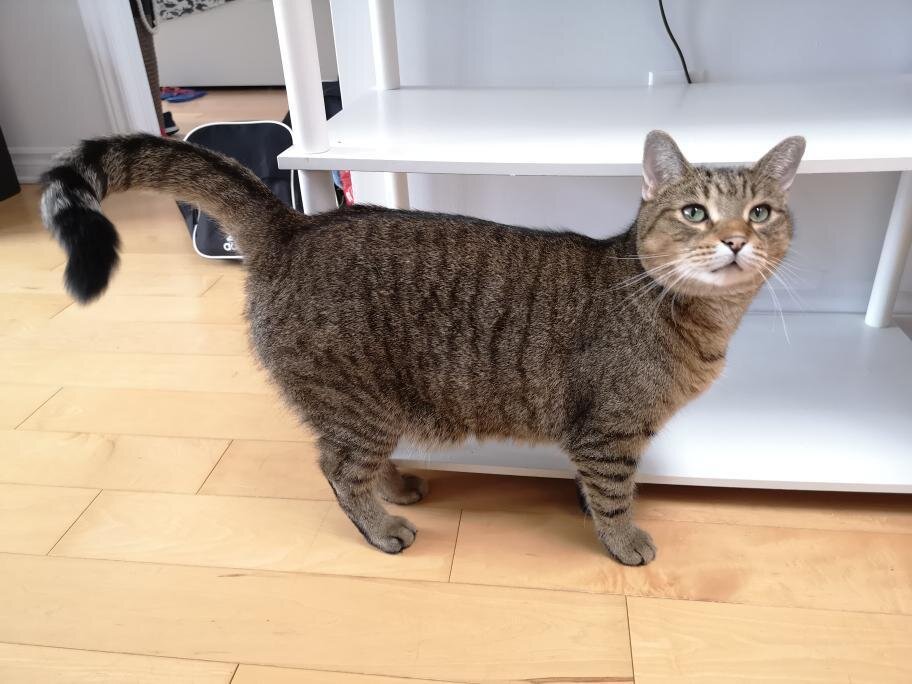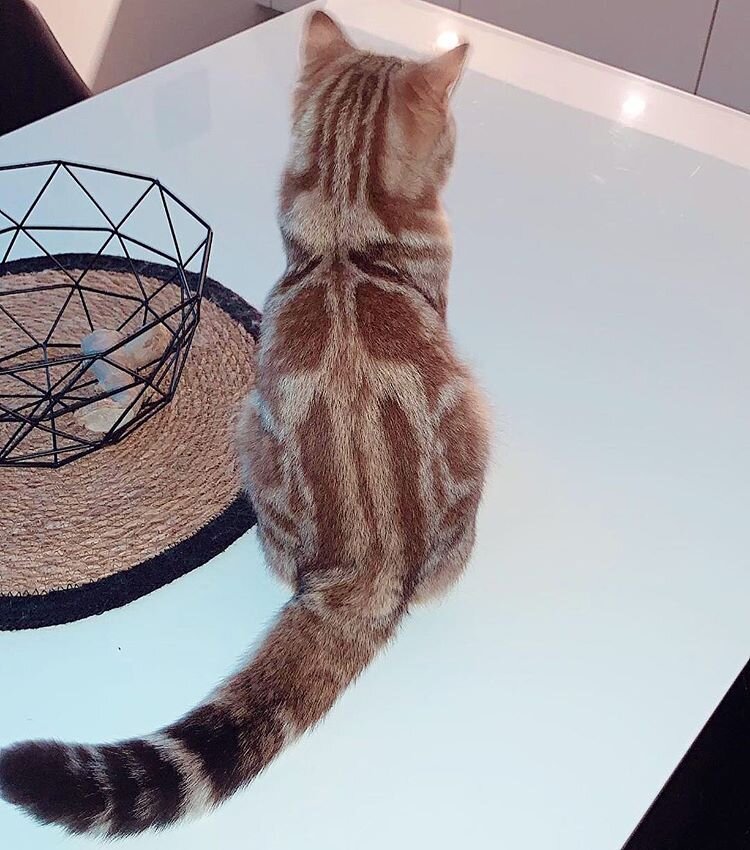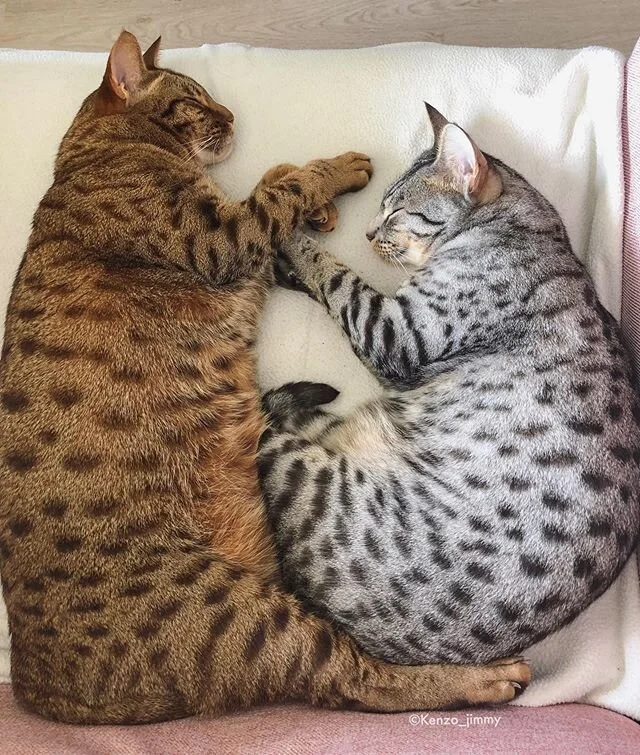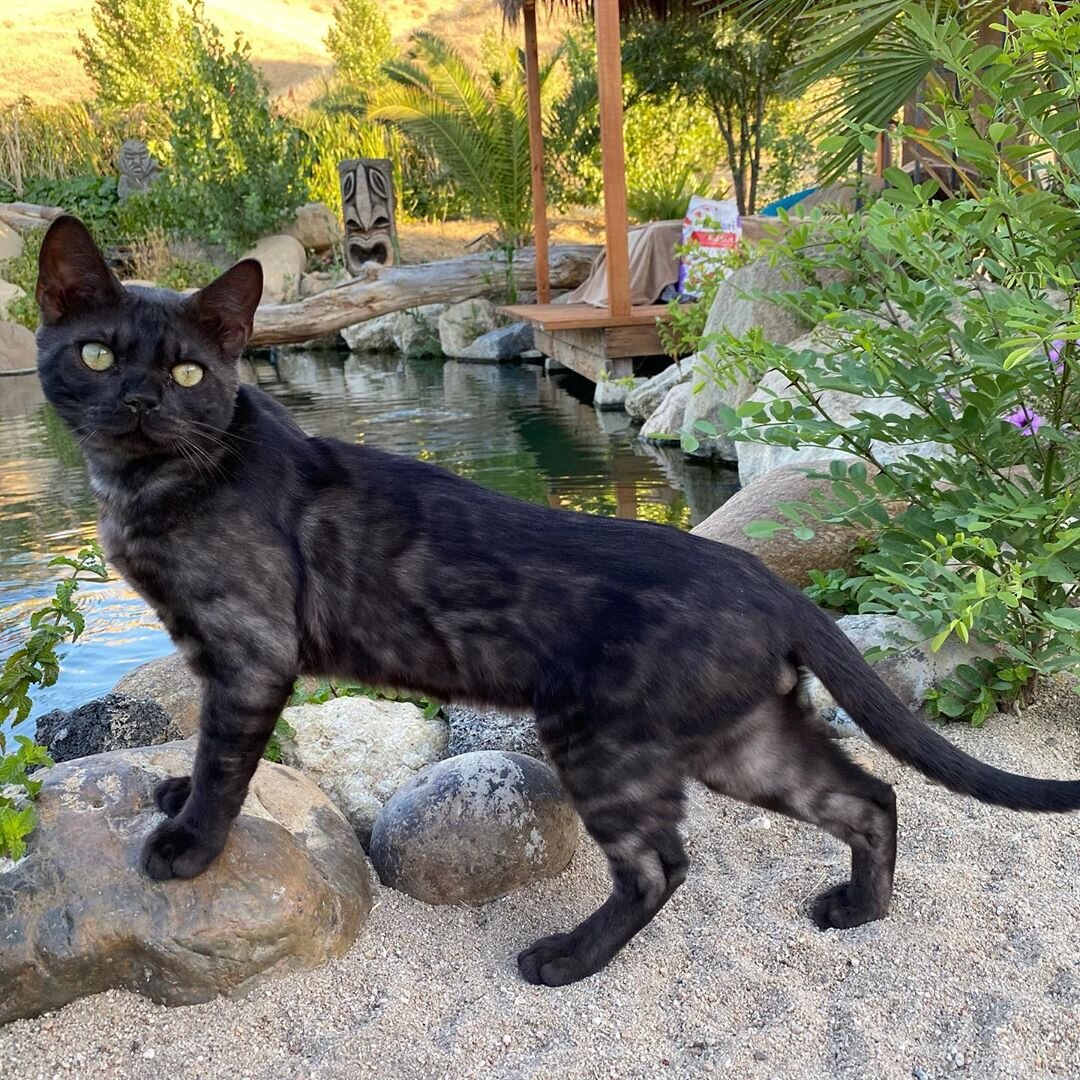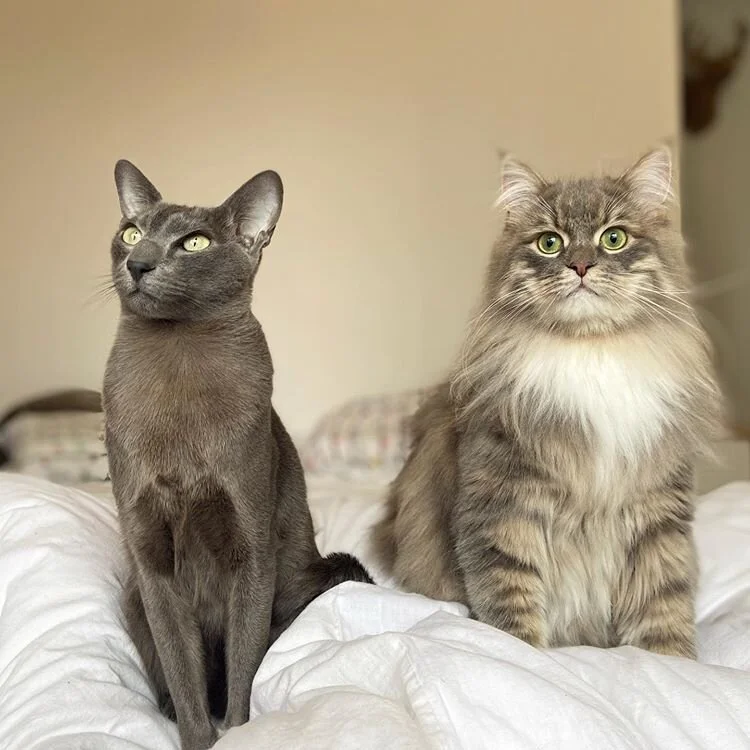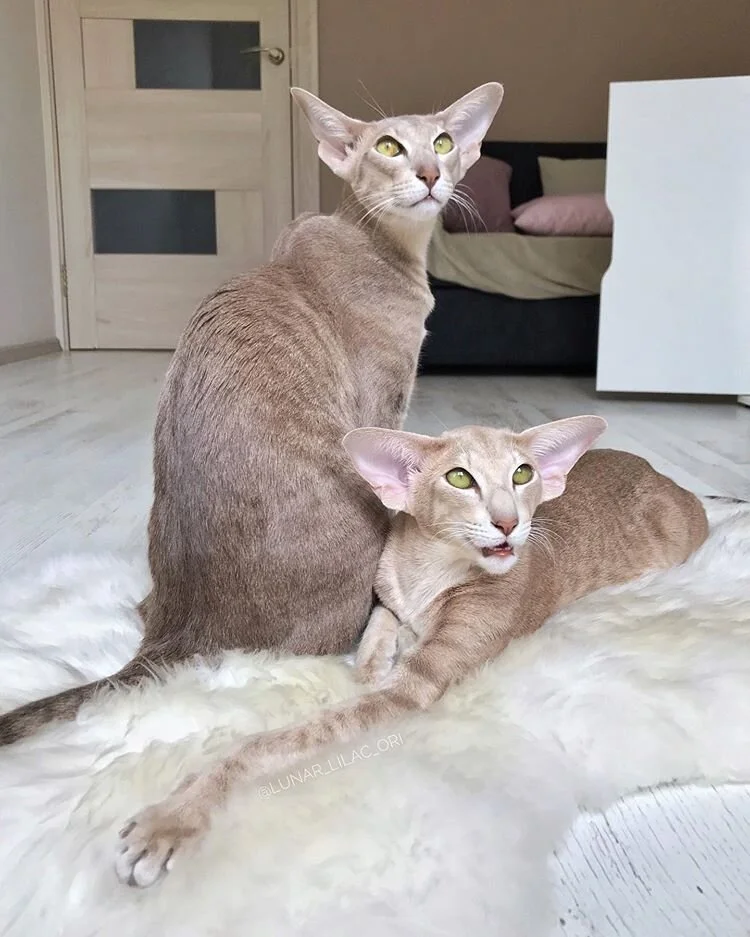Cat coat: tabby and genetics
What's the color of your cat? To answer this question, in this third article in my series on cat coats we are going to talk about all the types of markings a cat can have, and the genetics behind them.
Note: Before reading this article, I recommend that you read the first article in the series on solid cat colors, as some of the genetic explanations are useful to understand this article.
The previous articles in the series covered:
What’s a tabby cat?
A tabby cat is a cat that has agouti hairs. An agouti hair is composed of several bands of colors: a dark one with the base color of the cat, alternately with lighter and more reddish ones. So, a fur composed of agouti hairs has a clearer color than a solid one.
When a cat has a tabby pattern, the dark markings are made of solid hairs of the base color while the fur in between the markings is composed of agouti hairs.
Tabby cats can come in any existing cat colors, such as black, blue, chocolate, lilac, cinnamon, and fawn. For example, in a chocolate tabby, the markings are composed of hairs with a chocolate color, while the agouti hairs have bands of chocolate and light reddish chocolate.
Tabby cats usually look clearer than their equivalent solid color because of the agouti hairs. That’s why in many cat fancies black tabbies are called brown tabbies, but they shouldn’t be confused with the chocolate genetic color. Cats called “brown tabby” are genetically black tabby
Image of an agouti hair By Kersti - CC BY 2.5
Some characteristics of tabby cats are:
‘M’ shaped marking on the forehead
Thin pencil lines on the face
Dark ‘eyeliner’, and pale fur around it
Pigmented lips and paws
The nose is pinkish and outlined with darker pigment
Torso, leg and tail banding
The chin and the belly are often white or a paler color than the rest of the body.
These are just a handful of shortcuts to identify a tabby cat, but they're not an exact set of rules: some ticked tabby, for example, don't have any leg and tail banding.
On the left a cinnamon tabby and on the right a cinnamon solid from @cassia_timo_gustav_orientals
Tabby Patterns
There are 4 main types of tabby patterns, which I’m going to describe more in detail in this article. These are mackerel, blotched, ticked, and spotted. These types of patterns correspond to the way agouti hairs are distributed on the cat's body.
Mackerel tabby
The mackerel pattern is composed of vertical stripes similar to the one of a tiger. The name comes from the mackerel fish, which also has vertical markings. This pattern is the wild-type one, which means it’s typical in wild cats. All the other patterns are natural mutations that occurred in domestic cats. Mackerel is the most common tabby pattern, along with the blotched pattern.
Black mackerel tabby from @foxyyboxes
Blotched or classic tabby
The blotched tabby, also called classic tabby, is characterized by thick curved bands in a swirled pattern. The mark often looks like a bullseye and seen from above it can look like a butterfly pattern.
On the left a black golden blotched tabby from @britishcat_goldenmoonglade and on the right a red blotched tabby and white from @pizza_and_luna
Spotted tabby
The spotted pattern, as its name indicates, is characterized by spots on the cat's body. The spots can be more or less elongated into broken lines.
On the left a chocolate spotted tabby and on the right a black silver spotted tabby from @kenzo_jimmy
Ticked tabby
The last tabby pattern, ticked, is in fact an absence of any pattern: all the hairs are agouti on the body of ticket tabby cats. This means that there are no distinct dark-colored markings on the cat's body. This can give a salt-and-pepper effect to the coat.
Nevertheless, residual bandings on the legs, tails, and torso might be present in some ticked tabbies.
This pattern is often called the Abyssinian one, as it’s the pattern found in Abyssinian cats. However, the ticked tabby pattern is not limited to the Abyssinian breed.
On the left a black ticked tabby (with legs banding) and on the a black tortie tabby from @twomanylegs
Other patterns
The four main tabby patterns are not the only ones we can find in tabby cats. In addition to those, we can find some other patterns which are often an intermediate between two of the main ones, or patterns which are specific to some cat breeds such as the rosette and marble of the Bengal cat, or the Sokoke marbled pattern.
For example, broken mackerel is an intermediate between a mackerel tabby and a spotted tabby: these cats have broken stripes or long spots, depending on the point of view.
The Bengal breed has two specific tabby patterns: the rosetted, which is a subcategory of the spotted tabby, and marble tabby, a subcategory of the blotched tabby. This breed has an additional tabby pattern because it was hybridized with wild cats: this brought new genes for the new tabby pattern. These patterns were then improved and selected through selective breeding.
I will describe more in detail all the Bengal-specific tabby patterns in a detailed article on breed-specific cat colors.
A Bengal brown spotted tabby with rosette from @zeus_of_norway
The genetics behind tabby cats
Note: in this part, I will dive into the genetics behind the tortie color. I advise that you first read the introduction to genetics in this article.
All cats have a tabby pattern!
All cats have a tabby pattern, and yes, this may sound confusing. I know you are going to say “but solid black cats aren’t tabby”. Right, but while they are not agouti (they don't have any agouti hairs), they still genetically carry a tabby pattern!
In fact, there are different genes at play in tabby cats: one that determines if the cat is agouti or solid, and others that determine the tabby pattern of the cat. This means that all cats have tabby patterns but this tabby pattern is masked if the cat is solid. The tabby pattern can sometimes still be seen on some solid-color cats, especially on kittens, and it’s referred to as “ghost markings”.
A Bengal black smoke with rosette ghost marking from @leap_of_faith_bengals
Agouti
First, let’s talk about the agouti gene. There are two possible alleles: the dominant one ("A") which means the cat is agouti, and the recessive one ("a") which means a cat is non-agouti or solid. So, as A is dominant, if the cat is A/A or A/a, it will be agouti. If the cat is a/a, it will be solid. This also means that if you breed two solid cats, all their kittens will be solid. However, if you breed two agouti cats, it’s possible to get solid kittens.
As explained in this article on red cats, the orange gene is dominant over the non-agouti genotype. This means that an orange cat carrying a/a will still look tabby and that explains why all red cats always look tabby.
Red solid with a mackerel pattern from @cocodandfrits
Tabby pattern
Now let’s look at the genetics behind the different marking patterns. Here it gets a bit more complicated as there are several genes at play, and still some incertitudes.
Ticked
Firstly, the ticked pattern is determined by the dominant allele "Ti A" which corresponds to a ticked pattern and the recessive allele Ti+ for non ticked. If the cat is Ti A/Ti A or Ti A/Ti +, it will show a ticked pattern. If the cat is Ti +/Ti +, it is not ticked tabby.It has been hypothesized that cats that are homozygous ticked (Ti A/Ti A) don’t have any markings on the legs, while heterozygous ticked (Ti A/Ti +) have some. However, it seems that this is not always true and some polygenes are probably influencing this phenomenon.
Brown ticked tabby (without legs and tail banding) from @patrickcatson
Mackerel or Blotched
The second gene determines if a cat has a Mackerel or a Blotched pattern. The allele “Ta M” for Mackerel tabby is dominant, and the allele “ta b” for Blotched tabby is recessive. So, if a cat is Ta M/Ta M or Ta M/ta b, it has (or carry) a mackerel tabby pattern. If a cat is ta b/ta b, it has (or carry) a blotched tabby pattern.However, as said before, to show one of these two patterns, the cats should also be “not ticked”. This means that a cat should be Ti +/Ti + Ta M/- to be mackerel tabby, or Ti +/Ti + ta b/ta b to be blotched tabby.
On the left a blue solid and on the right a blue mackerel tabby from @loki.mojo
Spotted
Finally, the last theorized gene (it could be that, in reality, it might be one unique gene but the influence of multiple polygenes) is the Spotted gene. Its effect is to modify the mackerel or blotched patterns. The characteristic lines of these patterns are broken into spots in spotted cats. The Spotted gene ("Sp") is dominant: if a cat is Sp/Sp or Sp/sp the tabby pattern transformed into spots. If a cat is sp/sp, it has a normal mackerel or blotched tabby pattern. This gene is recessive towards the ticked pattern and, therefore, has no effect on a ticked tabby cat.
It has also been theorized that homozygous and heterozygous cats don't have exactly the same types of spots. A broken mackerel could be a cat heterozygous for the Spotted gene.
Two lilac spotted tabby from @lunar_lilac_ori
Similarly, the other tabby patterns of the Bengal and Sokoke could be the influence of some “wild” modifiers. There is still much to learn about the genetic behind the different tabby patterns!
Here is everything you need to know about tabbies and their pattern. In the next article I will talk about the colorpoints cats: stay tuned to know more about cat furs!
Sources & Additional readings
Eizirik, Eduardo et al. “Defining and mapping mammalian coat pattern genes: multiple genomic regions implicated in domestic cat stripes and spots.” Genetics vol. 184,1 (2010): 267-75. doi:10.1534/genetics.109.109629
Kaelin, Christopher B et al. “Specifying and sustaining pigmentation patterns in domestic and wild cats.” Science (New York, N.Y.) vol. 337,6101 (2012): 1536-41. doi:10.1126/science.1220893
Lyons, L A et al. “The Tabby cat locus maps to feline chromosome B1.” Animal genetics vol. 37,4 (2006): 383-6. doi:10.1111/j.1365-2052.2006.01458.x
Other article on cat coat
Solid cat colors
Torties and red cats
Point colorations
White cats and white spotting
Silver and smoke cats

